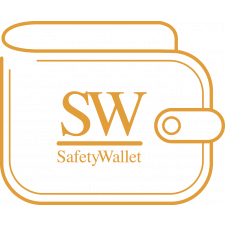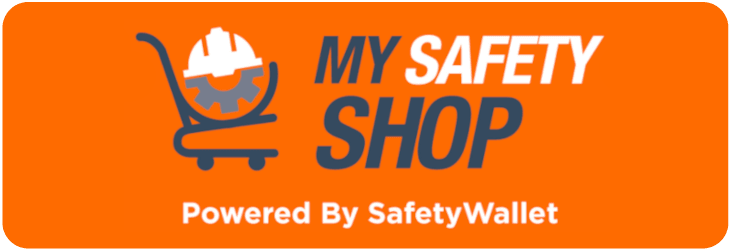What is a Health and Safety Statement, and a Risk Assessment? Part 2
Employers across all industries in South Africa despite the organisation’s size, nature of business, or industry in which it operates, are required to safeguard the health and safety of their employees, visitors, or any other person who may be affected by their work activities.
Employers may be asking an imperative question, however, relating to what a health and safety statement, and a risk assessment is, what they relate to, and what they entail.
What must a Health and Safety Statement cover?
The Health and Safety Safety Statement must:
- Specify how the health and safety of employees will be both secured and managed.
- Specify the hazards that have been identified and the risks that have been assessed.
- Provide details on how health and safety responsibilities and commitment will be managed in compliance with legal obligations such as the preventative measures being taken, resources provided, and other factors.
- Include plans as well as procedures to be followed if an emergency occurs.
- Specify the duties of employees.
- Include the names as well as job descriptions of persons appointed for health and safety, or those who perform tasks which are laid out in the statement.
- Contain the arrangements made for appointing safety representatives.
- Be written in a specific form, manner, and language which can clearly be understood by all employees.
- Include mechanisms for review.
- Have regard to the appropriate safety and health legislation including the Occupational Health and Safety Act, and all other relevant legislation.
Competent Person
A competent person is one who is deemed competent for the task that they are required to perform, taking account of the size of hazards of the undertaking or establishment in which they work. In addition, a competent person has the required training, experience, and knowledge appropriate to the nature of the work which must be done.
How is a Safety Statement Prepared?
Draw up a health and safety policy
The safety statement must start with a declaration which is signed at senior, responsible management level, on behalf of the employer. It must provide commitment towards ensuring a safe and healthy workplace, as reasonably practicable, and that all legal requirements will be complied with.
Identify the hazards
The first step involved in safeguarding health and safety involves the identification of hazards and risks from materials, equipment, chemicals, and work activities. The employer must systematically examine the workplace as well as activities to identify hazards relating to the workplace.
In identifying the main hazards, and to place risks in their true perspective, employers can also:
- Evaluate records pertaining to accidents, occupational diseases, and insurance claims.
- Any relevant legislation and/or standards covering the hazard.
- The instructions or datasheets of manufacturers.
Decide on the precautions
Employers may already have some measures in place and the risk assessment will verify or determine whether these are adequate. Employers must ensure that they are compliant with all the relevant regulations as they provide guidance on how risks can be assessed and how safeguards can be established.
Employers must consider whether the hazard can be eliminated altogether or whether the activity can be changed to make it safer. If this cannot be done, the safety measures to be taken must be provided in controlling or mitigating the risk.
Record the findings
The findings of risk assessments can be recorded on the safety statement. This entails writing down the more significant hazards and recording the most crucial conclusions.
Review the programme and update if necessary
The safety statement must be relevant, and its implementation must be a crucial part of everyday operations. A copy of the statement, or relevant extracts thereof, must be kept available for inspections at, or near, every workplace to which it relates.
Responsibilities
Those who are responsible to prepare a risk assessment as well as safety statement are:
- The employer
- Those who are in control of workplaces to any extent.
- Those who provide workplaces for use by others.
- Those who are self-employed, such as contractors and sub-contractors.
How can risk be controlled?
Employers must do what is necessary to ensure that the risk of injury or damage to the safety and health of employees is minimised, as far as practicably reasonable. Employers can do this if they have:
- Exercised duty of care in putting the necessary preventative measures in place.
- Identified the hazards and risks which relate to the workplace.
- Implement the appropriate measures such that it would be grossly disproportionate to do more.
Some common control measures for risks include:
- Replacing a system which is hazardous.
- Replacing a substance with one which is less hazardous.
- Designing the workplace in such a way that risks are reduced.
- Ensuring that the workplace is clean and tidy.
- Extracting or containing the hazard at its source.
- Adapting the work to suit the individual performing it.
- Ensuring that there is adequate ventilation in workplaces where extraction at the source is not possible.
- Isolating the process or the worker who may be exposed to risk.
- Safeguarding machinery.
- Ensuring that employees are trained and supervised.
- Ensuring that there are emergency planning procedures.
- Analysing and thoroughly investigating incidents and accidents.
Key components involved in measuring health and safety performance
The two components involved with measuring health and safety performance are active monitoring and reactive monitoring.
Active Monitoring
This is done to prevent incidents and accidents before they occur. This is done by carrying out routine inspections to determine whether standards are being maintained and whether they are effective.
Reactive Monitoring
This involves the measures that are put in place following an incident or accident, determining what went wrong, and how it can be corrected to prevent recurrence.
How to review a Safety Statement and how often must it be done?
The following must be considered when the safety statement is reviewed:
- Whether the aims were relevant and appropriate.
- Whether it identified the hazards, assessed their risks, and set out the preventative and protective measures.
- Whether the health and safety measures, which were identified, were implemented in practice.
- Whether new work practices or processes were introduced following the last review.
- Whether the measures which were implemented comply with the relevant regulations.
- Whether the health and safety standards were complied with.
- Whether there are areas where standards are absent or inadequate.
- Whether data has been analysed to find the immediate and underlying causes of incidents, injuries, and accidents, and whether there are trends that become known.
- Which new health and safety measures were applied after a reportable incident or accident?
- Whether adequate financial, physical, human, and organisational resources were committed to health and safety.
- What improvements are necessary towards health and safety performance.
Permit to Work Systems
These are written systems relating to the procedures which must be taken to ensure that employees are being safeguarded when they are involved in activities such as repairs, maintenance, or cleaning work, in dangerous areas or with dangerous operations.
PTW, as they are also commonly known, involve mechanical, electrical, or process isolation procedures. It also involves monitoring and sets out a systematic approach towards the activities to be done, the hazards involved, and measures to be put in place.
Situations where such a system is necessary may include where employees work in confined spaces, where work must be conducted on machinery and lockout is necessary, and several other tasks.
The safety statement must include and clearly indicate the activities that will require a permit to work system.
How does SafetyWallet support its subscribers?
SafetyWallet, in partnership with MAKROSAFE and OHS Online, ensures that subscribers can obtain the highest level of compliance with the Occupational Health and Safety Act, all other Regulations, and more.
MAKROSAFE / SAFETYWALLET / MY SAFETY SHOP are all in Partnership.
Through the assistance and support in the health and safety programme of the subscriber, SafetyWallet helps subscribers with the health and safety risk assessments that must be conducted to ensure that subscribers are compliant in providing a healthy and safe working environment.
Click on the image below to find a SafetyWallet Solution that suits your business (Branch/Site specific) and get the benefits along with the subscription:
Keeping your workplace legally Health and Safety Compliant may seem like a daunting task. At MAKROSAFE, we have an experienced team of OHS experts available to assist in keeping your company Health and Safety Compliant according to South African Occupational Health and Safety Act 85 of 1993 and Regulations.
The MAKROSAFE Health and Safety Risk Control Package will assist you with your Risk Management Programme.
By signing up with our Health and Safety Risk Control Package, MAKROSAFE will assist you with your Risk Management journey.








Comments (1)
Situations where such a system is necessary may include where employees work in confined spaces, where work must be conducted on machinery and lockout is necessary, and several other tasks.
2022-09-21 13:05:43Dear Aditya Thank you for finding the time to read our blog and for your positive your comment... We really do appreciate it...
2022-09-22 07:34:48